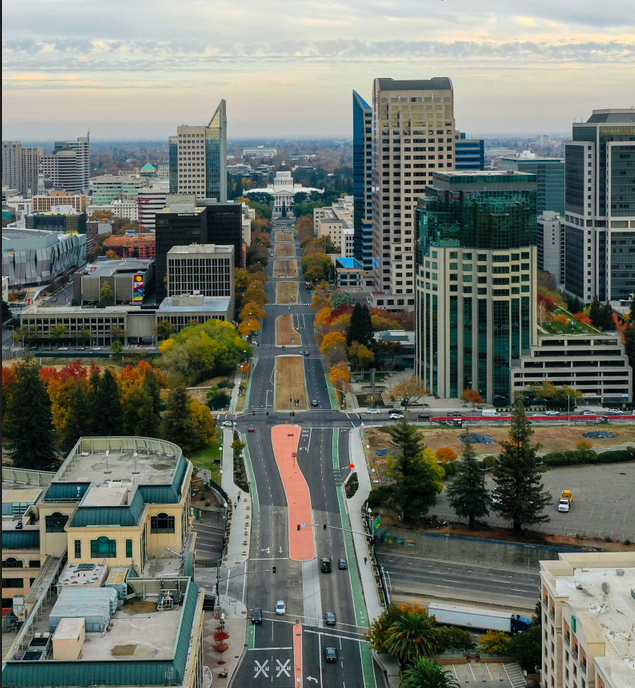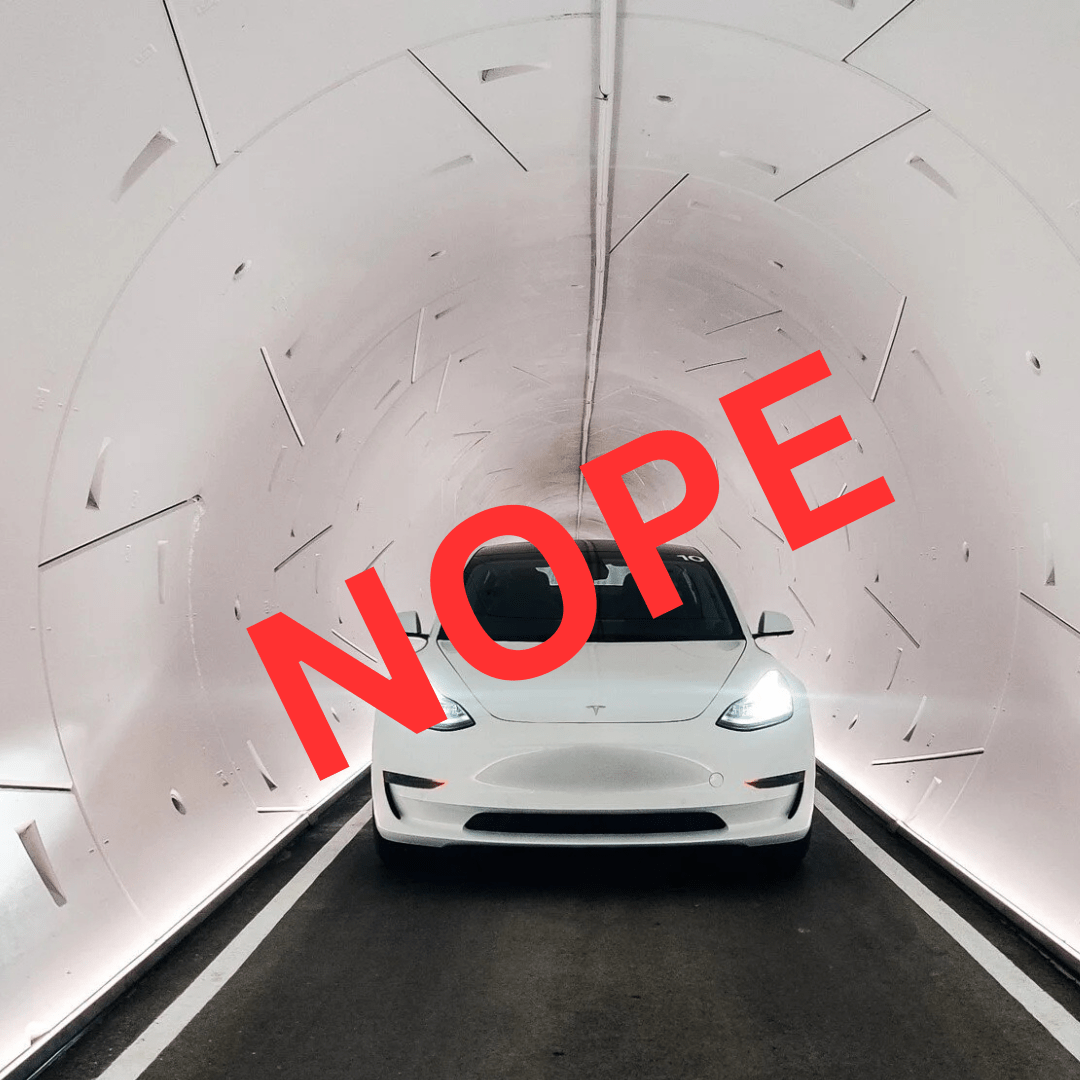This year was not a good one for big wins. But it may go down in history as a critical turning point for our national transportation future.
As quarantine orders ebbed, drivers returned to the road en masse and the newly-inaugurated Biden administration stepped onto center stage, conversations about what a sustainable America might look like immediately began to shift, particularly on our roads and transit routes. That pendulum might not have swung as far as some might have hoped, but there's no doubt that the post-Trump debate over what's possible for people who bike, walk, roll and take transit has taken on a new tone, particularly in light of how many of the most radical transportation changes of the early Covid era proved to be more than passing trends.
Let's take a look at some of this year's best news — and start thinking about how to build on it in 2022.
Advocates found big silver linings in a flawed bill
After spending months in the congressional sausage-grinder, the surface transportation reauthorization bill that America got in fall of 2021 was pretty status-quo. But advocates were sure to shout out some significant line-items in the legislation that deserve applause.
Those bright spots included new dollars for transit station accessibility, electric school buses, and road diets, as well as a 60-percent boost for the largest federal program aimed at building safe walking and biking infrastructure. A slate of new policies became law, too, like one that will force most urbanized states to spend more money on saving vulnerable road users lives, and a new requirement that automakers test how likely their vehicles are to kill a vulnerable road user in a crash and make those stats known to prospective buyers.
Advocates should hold onto those small victories as they fight for more fundamental changes in the year to come.
New US DOT leadership wrote some great grants
Transportation Secretary Pete Buttigieg has been the subject of intense scrutiny among sustainable transportation advocates since he was confirmed to the top spot at US DOT in January, some of whom who questioned his mobility resume and commitment to radically reimagining the role of safety for communities of color in the street realm. But in the months sense, many have been pretty happy with how the former mayor's team has wielded their limited discretionary power so far – and optimistic about how he'll allocate the billions of new grant dollars that will fall under their sole purview in 2022 and beyond.
In November, the agency proved it would do more than play lip service to equity and safety when it released the list of grantees for its recently rebranded RAISE Grant program, which advocates praised for its precedent-breaking focus on multi-modal infrastructure, vulnerable road user safety, and reconnecting communities of colors torn apart by federally-funded highways. Those projects will share a relatively small $1 billion pie, but Buttigieg and co. will have authority over $100 billion in discretionary grants more under the latest infrastructure law in the years to come — and they've also promised to do everything legally allowable to pressure states to spend their formula funds just as sustainably and equitably.
That could be a great sign of things to come in the new year — and for the rest of the Biden administration's tenure.
Feds promised a potential sea-change on safety
The other good news out the Buttigieg administration followed some of 2021's worst news: that road traffic deaths were on track to reach their highest level in over a decade.
To its immense credit, US DOT responded to that news by immediately promising a new "National Road Safety Strategy," which the agency said would be "rooted in the Safe System approach" that's been embraced by the countries around the handful of countries world that have made the most progress towards Vision Zero.
That move came just a few months after the National Transportation Safety Board urged the agency to do just that, indicating that the feds are acting quickly on expert safety advice. (It certainly didn't hurt that former Massachusetts DOT Director and Safe Systems champion Stephanie Pollack assumed leadership of the Federal Highway Administration back in January, either.)
Time will tell what that new strategy actually looks like, and how much it will impact the actual activities of state highway agencies. But evidence is mounting that while Congress lets sustainable transportation users down, the DOT is stepping up to staunch the bleeding.
The Covid-19 bike boom kept booming
The uncertainty of 2020 may have effectively scared many erstwhile transit commuters onto two-wheeled transportation — or at least scared them out of gyms and onto outdoor rides. But even after mass transportation was largely proved safe and gyms started re-opening their doors, many Americans stayed in the saddle, and advocates are hopeful that cities will start building infrastructure to serve that sustained surge in riders.
In May, the Bureau of Transportation Statistics dropped the stunning news that ridership had actually increased in March and April of 2021 compared to the same months in the year prior, despite the fact that spring 2020 was one of the bikeyest seasons on record, especially in warmer climates in the American Southwest. Considering that most cities had sunsetted their quarantine-era pop-up bike lanes by then — if they ever attempted them in the first place — those stats are particularly jarring, and suggest a massive un-tapped market that could get even bigger if communities installed infrastructure that truly served riders of all ages and abilities.
Even if those less-likely riders didn't get the infrastructure they needed this year, many of them did get vehicles that make riding with mobility challenges significantly easier. A massive explosion in the electric-assisted bicycle mark this year could be accelerated even more by a provision in the impending Build Back Better bill, which would give Americans thousands to buy even more e-bikes of their own.
That groundbreaking legislation has yet to pass, but the stage is set for progressive cities to make big bike-friendly moves in 2022.
Big state and local wins
In sustainable transportation, some of the most seismic victories seem pretty small at first — and 2021 was full of significant local wins that could set an example for cities across America.
Cities like Minneapolis and St. Paul and Boston scored major wins this year for the parking reform movement with precedent-setting new laws that proved that even significant metros don't need to require developers to build excessive car storage — and that sometimes, they might even benefit from limiting how much land the private sector can devote to garages and spots. At the state level, Virignia, Texas and California all considered reforms to "jaywalking" laws that have provided police a handy pretext for racially biased stops for far too long; regionally, meanwhile, residents sent a clear message at the ballot box that they want more funding for transit, whether they personally intend to ride it or not.
All those wins may seem like low-hanging fruit, and they are. But they could also give communities who haven't taken these incremental steps the inspiration they need to follow emerging best practices into 2022 — and just maybe, start climbing to even higher heights.
Merry Christmas and a Happy New Year to all.






